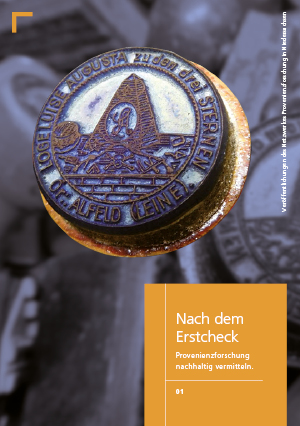How to Cite
License (Chapter)

This work is licensed under a Creative Commons Attribution-ShareAlike 4.0 International License.
Identifiers (Book)
Published
Impulse: Provenienzforschung ausgestellt: Selbstzerfleischung zum Selbstzweck?
For the past few years, there has been an increase in the number of exhibitions that focus on provenance research. Museums are using provenance research on their collections as a thematic focus for temporary exhibitions. These exhibitions have already produced their own stereotypes, for example the colour scheme, the wording in titles, the traffic light system to indicate the dubiousness of a provenance, the atmosphere in the exhibition room or the fact, that the backsides of the exhibits are shown. The focus of this comment is on the presence of archive materials in such exhibitions. It is striking that the content of the archival documents often fades into the background and the sheer presence of the same in the exhibition space comes to the fore. The exhibited (museum) archive becomes a symbol of the total transparency of museums. The museum turns its inside out. And the archive material thus embodies the good will of the institutions to clarify their own collection history. However, what is overdue and correct could also lead to a false motivation and lead in the wrong direction. Provenance research exhibitions must not be allowed to take on the character of a one-off cleaning. Museums must not declare the chapter closed after an exhibition on provenance research in their own collection – even if this is often exactly what happens within the framework of thirdparty funded projects.







